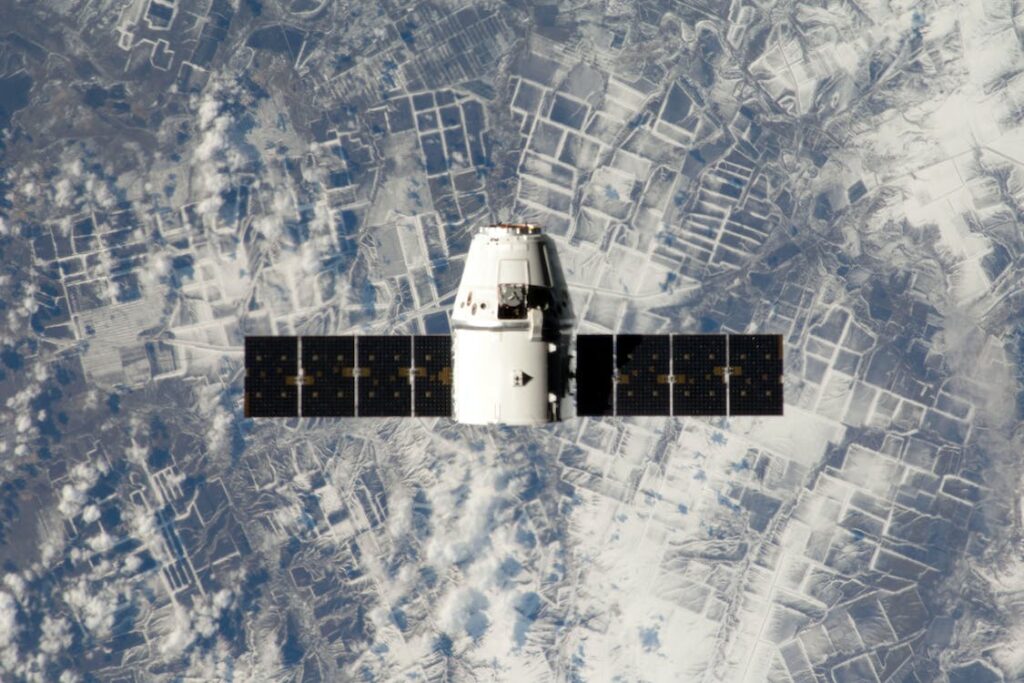Exploring Earth’s Oceans and Atmosphere: The Groundbreaking Journey of NASA’s PACE Satellite
NASA’s Plankton, Aerosol, Cloud, and Ocean Ecosystem (PACE) satellite is leading a groundbreaking environmental research project. PACE, or phase-change environmental research, will study Earth’s intricate atmosphere-sea interactions. With its cutting-edge sensors and expanded observational capabilities, this $805 million mission shows NASA’s technical dominance and advances our efforts to address environmental degradation and climate change. PACE intends to provide previously unreleased statistics that will affect environmental policy and climate research before its global tour.
Mission Overview: NASA’s PACE Satellite
Launched atop a SpaceX Falcon 9 rocket, the NASA-funded Plankton, Aerosol, Cloud, and Ocean Ecosystem (PACE) satellite will provide an essential aerial perspective of Earth’s atmosphere and seas from 420 miles above the planet’s surface. NASA is demonstrating its commitment to use cutting-edge space technology for environmental studies with this $805 million project. PACE will conduct twice-daily inspections of the globe using its advanced sensors, which include thermal radiators and a rotating telescope. Its objective is to collect essential data on oceanic phytoplankton, clouds, and aerosols to enhance climate models and broaden our knowledge of the interplay between the environment and ourselves.
PACE’s Role in Climate and Environmental Research
PACE holds significant potential for improving our knowledge of environmental science, especially when it comes to researching the interactions that occur between the atmosphere and the ocean. Monitoring the atmospheric-oceanic carbon dioxide exchange, which gives essential insights into the global carbon cycle, is one of its most critical responsibilities. Furthermore, PACE will further our understanding of the dual functions that atmospheric aerosols play in climate dynamics, namely as absorbers and reflectors of solar energy. The satellite will also make it possible to investigate air pollution and marine ecosystems, with a focus on the significance and health of phytoplankton. These varied research capacities demonstrate how PACE may impact environmental policy and fill knowledge gaps.
Innovations in Oceanic and Atmospheric Observation
The Ocean Color Instrument (OCI), which expands the visible spectrum to analyze how sunlight interacts with marine components like phytoplankton’s chlorophyll, is one of PACE’s most creative pieces of equipment. Understanding the dynamics and health of the ocean depends on this approach. Accurately measuring light’s journey through various Earthly components, the Spectro-Polarimeter (SPEXone) and the Hyper Angular Research Polarimeter (HAARP2) work in tandem with the OCI to provide scientists with a comprehensive image of the ocean, clouds, and aerosols. These novel tools offer new avenues for scientific investigation and represent a major breakthrough in environmental monitoring.
The Future of Earth Monitoring: Implications and Expectations
Earth monitoring has evolved with the PACE satellite. We may be able to anticipate climate and get a greater understanding of Earth’s natural processes thanks to this massive, real-time data flow. The abundance of data will impact environmental science and policy. In a timely way, Goddard Space Flight Center and other observatories will integrate the data into their research and management programs, highlighting PACE’s contribution to better environmental stewardship and ecosystem maintenance.
The PACE satellite’s deployment has allowed us to gain a deeper knowledge of the planet’s environment. NASA’s innovative project will yield important information on the interplay of the ocean and atmosphere. The outcomes of PACE will inform and advance research on global climate change initiatives and environmental policy. PACE is a shining example of environmental care, filling in knowledge gaps and offering fresh perspectives on ecosystems on Earth to promote a more sustainable and informed future.


